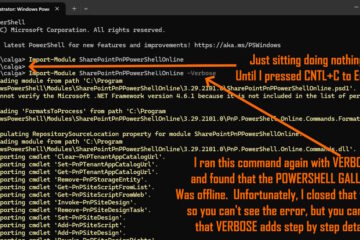Originally, this post was titled: “If you are planning on putting a couple of SSD drives in a RAID 1 (Mirror), don’t.” but after many more hours of calls to Intel and pages of reading I can safely say: “If you are planning on putting a couple of SSD drives in a RAID 1,5,6,10…, go right ahead!”
THE PROBLEM WITH ‘TRIM’:
SSD’s perform two writes for every one you ask them to do. The first write, wipes the data from the memory cell and the second write pops the data into the cell.
SSD’s optionally can use an Operating System command called TRIM which will perform the first write/cell wipe in advance when it determins that memory cells with blocks of data in them, are no longer in use.
Most RAIDs use old the old SCSI protocols which do not support TRIM and so there are (today… but you just know this will get fixed in the future) no way to make TRIM commands work on these controllers.
Intel says there is about a (maximum) 10% performance boost with TRIM and conversly there is a maximum 10% hit without TRIM. However, SSD drives are soooo much faster than conventional disk based drives, the SSD will still, by far, be the best choice for speed and reliablity.
NEW DRIVERS STILL DON’T ALLOW TRIM IN RAID:
New drivers allow you to connect your SSD to RAID controller, but NOT use it in a RAID array.
You may see sites like THIS one that say Intel now has TRIM friendly RAID drivers (version 9.6 or newer) available HERE , but that is not quite accurate. What this means is that you can CONNECT your SSD to those Intel RAID contollers (which are supported by that driver) BUT YOU STILL CAN NOT USE THE SSD IN A RAID; not even a RAID 1 mirror.
Previously if you connected an SSD to a RAID controller (not in a RAID configration… just connected as a single drive on the RAID controller) you would NOT have TRIM, but now you can have TRIM work on a single disk (non-RAID) on an Intel RST (Rapid Storage Technology) desktop RAID adpator.
SUMMARY:
So to be clear. As of early 2011 the facts are:
- TRIM will work on SATA controllers
- now TRIM will work on SOME Intel RAID contollers when a NON-RAID’ed SSD is attached
- there are NO configrations which support TRIM on RAID’ed SSD drives
- TRIM is NOT required to work on SSD’s
- SSD’s can safely be RAID’ed to any level 0,1,2,5,6,10 …



5 Comments
Peter · November 19, 2011 at 4:17 pm
I was an early bird putting two Cosair 128P2 SSD’s in RAID 0 on my Intel ICH10R controller. I deceided to do this, because the Intel documentation showed TRIM support was available on ICH10R raid controller. It was after I had the RAID 0, that the documentation was corrected, to mention that TRIM was not supported in a RAID setting. Bummer.
For some time the RAID 0 performed at aprox. 400 MB/sec read speeds and a Windows Experience index of 7.3, but in the mean while it is degraded to 270 MB/sec and a Windows Experience Index of 5.9.
So, I think Intel should redo the math. The degradation on my system is much more than 10%, due to lack of TRIM support.
RchGrav · December 2, 2011 at 11:51 pm
Did you consider the possibilities that Intel was calulating those numbers based upon their own lineup of solid state drives, or on solid state drives in general? My understanding is that there is a multitude of different controllers with various techniques for maintaining performance over time. For example.. I have heard that many Sandforce based controllers will maintain their performance levels over time if you are willing to leave 10-20% of your space unpartitioned. This is due to the way the SF does its garbage collection. I’m not saying Intels math is or isn’t correct.. I’m just saying do you think they make statements about other companies products, or their own.
Ian Matthews · December 4, 2011 at 12:44 am
While I quite like Intel, I beleive they have a history of selectively telling the whole truth. Certain in when the CPU wars were burning hot with AMD, Cirrus and Intel, Intel had some debatable math in their promotional materials.
Gerard · October 10, 2011 at 3:32 pm
Thanks for the info this is some of the most useful I’ve seen – there is a lot of misleading stuff out there on this subject. … Incidentally, have you come across any info more recent than Feb – I’m interested in whether there are any raid drivers that support trim that have become available since Feb, if you’ve seen any info on that would appreciate a ‘heads up’.
PS – just a suggestion – It would be a really good idea to put the four digit year in the banner rather than just 11 Feb, which I initially read as ’11th Feb’ – there’s good info in your article, but easy to pass by because not sure how current it is … luckily I just spotted 2011 at the bottom before passing on …
Items to Consider When Selecting a Phone System in a Post Nortel World - Up & Running Technologies Calgary · February 14, 2011 at 3:20 pm
[…] have no moving parts and CAN be RAIDed. Print, email, or share on your favorite social […]